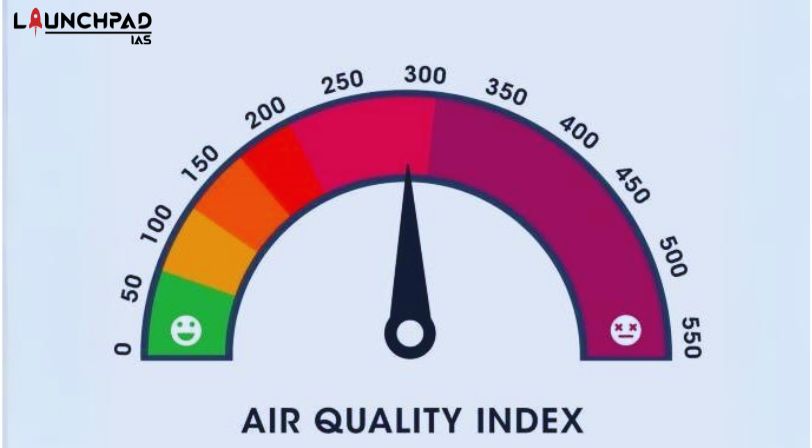What is the Air Quality Index (AQI)?
- AQI is a number used to communicate to the public how polluted the air currently is or how polluted it is forecasted to become.
- As AQI increases, an increasingly large percentage of the population is likely to experience increasingly adverse health effects.
- Different countries have their own air quality indexes, corresponding to different national air quality standards.
- The AQI is most commonly used to describe ground-level ozone levels.
- However, the AQI can be used to represent five pollutants that pose a threat to human health.
These pollutants are:
- Ground-level Ozone or O3
- Particulate Matter (soot and dust) or PM
- Carbon Monoxide or CO
- Sulphur Dioxide or SO2 and
- Nitrogen Dioxide or NO2
How it is calculated?
- The pollutants in the affected air are given a weight based on a formula. It has been developed by the CPCB in consultation with IIT-Kanpur.
- That weight depends on the kind of impact it has on human health, each of the pollutants is given a weight.
- The worst of these weights is given as a composite air quality.
- So instead of giving six different numbers, six different colors, it throws up one single color, one single number.
- The index will throw up one number which will be given to the public.
- People will know the health of their air quality based on this number and one associated color code

What are NAAQ standards?
- The mandate provided to the Central Pollution Control Board (CPCB) under the Air (Prevention and Control of Pollution) Act empowers it to set standards for the quality of air.
- Hence the current National Ambient Air Quality Standards were notified in November 2009 by the CPCB.
- Prior to this, India had set Air Quality standards in 1994, and this was later revised in 1998.
- The 2009 standards further lowered the maximum permissible limits for pollutants and made the standards uniform across the nation.
- Earlier, less stringent standards were prescribed for industrial zones as compared to residential areas.
What are the Initiatives Taken for Controlling Air Pollution?
- System of Air Quality and Weather Forecasting and Research (SAFAR) Portal.
- Air Quality Index: AQI has been developed for eight pollutants viz. PM2.5, PM10, Ammonia, Lead, nitrogen oxides, sulphur dioxide, ozone, and carbon monoxide.
- Graded Response Action Plan (for Delhi).
- For Reducing Vehicular Pollution:
- BS-VI Vehicles,
- Push for Electric Vehicles (EVs),
- Odd-Even Policy as an emergency measure (for Delhi).
- New Commission for Air Quality Management
- Subsidy to farmers for buying Turbo Happy Seeder (THS) Machine for reducing stubble burning.
- National Air Quality Monitoring Programme (NAMP): Under NAMP, four air pollutants viz. SO2, NO2, PM10, and PM2.5 have been identified for regular monitoring at all locations.
Related Links:


